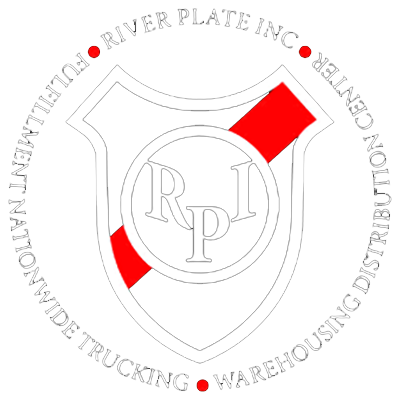Different companies use various manufacturing production strategies to fulfill customer orders. Some make goods only after receiving an order while others produce goods and distribute them to retailers where customers buy them in store. The order fulfillment process can be broken down into a ratio of production lead time, how long it takes to manufacture a product, and the demand lead time quoted by the firm to a customer. Based on this lead time ratio and the type of product, a company has several basic strategic order fulfillment production options to choose from and often combines one or more to meet market demands.
1. Build To Order (BTO)
Also referred to as Make To Order (MTO), the BTO strategy is applied when the product is only built when there is a confirmed order for the product. BTO is the oldest style of order fulfillment and is typically used for highly customized or low volume products like automobiles and airplanes. It can also be used for other highly configured products like bikes or computer servers. The main advantages of a BTO approach in high product variety environments is the ability to supply the customer with an exact product specification, reduced sales discounts and finished goods inventory in addition to a reduced risk of in stock obsolescence. The biggest disadvantage is that manufacturers are susceptible to market demand fluctuations that could lead to reduced capacity utilization in manufacturing. The most effective approach uses proactive demand management. Academic researchers are still studying how to best use both BTO and BTS together effectively without compromising operational stability and product requirements.
2. Built To Stock (BTS)
This is the most widely used strategy today across several industries. It refers to products that are built before a final purchaser has been identified based on historical demand. The BTS strategy allows a rapid response to customer demand but is a more costly approach due to having to maintain stocking levels that closely meet demand. Due to the widespread proliferation of products in the market, there are a number of manufacturers that take a combined approach where some items are BTS and others are BTO enabling them to meet a variety of customer demands. This is commonly referred to as hybrid BTO.
3. Make To Stock (MTS)
MTS is the most traditional production strategy used to match production with customer demand forecasts. Goods are produced and placed into inventory at the retail location. Sales forecasts based on historical ordering data are used to determine how much stock should be produced. The more accurate the forecasting, the more efficient the MTS strategy. MTS can be a disadvantage if there are inaccurate forecasts that lead to excessive inventory or stockouts. Many times Make To Order (MTO) and Assemble To Order (ATO) are used as alternatives or in combination with the MTS strategy.
4. Make To Order (MTO)
The MTO strategy allows customers to purchase products to their custom specifications. This approach only allows the manufacturing of a product after the customer places the order. It allows for more flexible customization versus ordering direct for the retailer’s shelf. As a result, this creates additional wait time for the customer to receive the product. The MTO strategy relieves the issue of carrying excessive inventory compared to a Make To Stock (MTS) strategy. Dell computers employs this strategy in their production of computers. Custom tailored clothing, custom machinery and some fine jewelry companies also use this strategy.
5. Assemble To Order (ATO)
The ATO approach allows products to be ordered by customers and produced quickly and customized to a certain extent. It requires that the basic product parts or ingredients are manufactured but not yet assembled. Once the order is received, the items are then assembled and delivered to the customer. list of sites . The ATO strategy is a hybrid of Make To Stock (MTS), where products are fully produced in advance, and Make To Order (MTO), where products are made once the order has been received. ATO combines the benefits of both MTS and MTO strategies, getting the products to the customer quickly. Some fast food restaurants use this strategy. When a customer places an order for a hamburger, it is assembled from a stock selection of ingredients. Auto manufacturers also use this strategy for custom orders where a customer chooses from a variety of features available for a vehicle such as interior fabrics, exterior paints, seat style, engine type, wheel or tire options. Once the order is placed, the manufacturing plant assembles the standard component parts to the customer’s specifications then ships the vehicle.
6. Engineer To Order (ETO)
After a unique order is received, a part or all of the product is designed and built to customer specifications. Unlike other products, the customer is heavily involved throughout the entire design and manufacturing process. Design specifications, requirement files, engineering changes and other information is often collaborated between the ETO company and customer. Each product is complex with long lead times and requires a separate set of item numbers, bills of material and routings. ETO products are well tailored and often built from difficult to source and expensive parts and highly engineered components. This approach is used most commonly by custom design manufacturers for large construction projects and one off products such as Formula 1 cars.
Production strategies have been typically considered long term action plans for an organization driven by the sales forecasts of products. With increased competition however, most companies are employing short term action plans to provide more flexibility in their production processes so they can better respond to market fluctuations. Great companies set a long term production strategy that can be modified to meet demand changes as they go. A good plan enables production managers to take the critical steps in global sourcing, costing techniques, quality maintenance, effective materials handling and inventory control with the proper emphasis on service. Several companies are learning how to combine several of these strategies to be more accommodating to their current customers and attract new customers to their brands.



